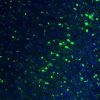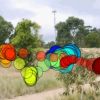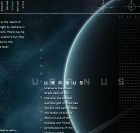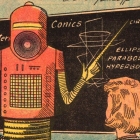-
 +19 +1
+19 +1The Weirdest Eyes in The Animal Kingdom See a World We Can't Even Imagine
When you view the world a certain way, it's easy to forget not everyone has the same vision.
-
 +23 +1
+23 +1Everything You See Is From 15 Seconds in the Past, New Research Claims
Open the camera app on your phone and start recording a video. Place the screen right in front of your eyes and try to use the live footage as a viewfinder. Tricky, right? The shapes, colors, and motion in the video are jarring. Scientists say this exercise is a close approximation of the messy visual data that our eyes constantly bombard our brain with. So how exactly do we see without feeling dizzy or nauseated?
-
 +17 +1
+17 +1Brain Scans Show Why Our Mind's Eye Sees The World So Differently to Everyday Vision
Researchers have discovered a neural overlap between human and machine that helps to explain why what we see in our mind's eye is different to the information being processed by our actual eyes when we're peering at something in reality.
-
 +13 +1
+13 +1The women with superhuman vision
As Concetta Antico took her pupils to the park for an art lesson, she would often question them about the many shades she saw flashing before her eyes. “I’d say, ‘Look at the light on the water – can you see the pink shimmering across that rock? Can you see the red on the edge of that leaf there?’” The students would all nod in agreement. It was only years later that she realised they were just too polite to tell the truth: the colours she saw so vividly were invisible to them.
-
 +16 +1
+16 +1Scientists Injected Nanoparticles Into Mice's Eyes to Give Them Infrared Vision
It’s easy to forget it, but much of the world is invisible to us. I don’t mean that in the sense of things being really tiny, or in any metaphorical way. No, most of the world is literally invisible. That’s because what we call visible light is actually a tiny sliver of the much greater electromagnetic spectrum. The rainbow we see sits in the middle of a vast continuum of wavelengths, including everything from high energy gamma and ultraviolet radiation to much lower infrared and radio waves.
-
 +17 +1
+17 +1Animals with 'night vision goggles'
Could you survive in pitch-black conditions? Meet the animals that not only survive but thrive. By Jonathan Amos.
-
 +2 +1
+2 +1Strange Eye Proteins Allow Birds to Actually See Earth's Magnetic Field
Two new studies by Universities in Sweden and Germany show evidence that birds navigate by literally seeing Earth’s magnetic field in their vision, thanks to eye proteins called cryptochromes, which might operate through a mechanism called magnetoreception. By Sequoyah Kennedy.
-
 +21 +1
+21 +1How cats see the world compared to humans
What do cats see? Artist Nickolay Lamm consulted three experts to hypothesize how cats view the world compared to humans. The biggest difference between human vision and cat vision is in the retina, a layer of tissue at the back of the eye that contains cells called photoreceptors. The photoreceptors convert light rays into electrical signals, which are processed by nerve cells, sent to the brain, and translated into the images we see.
-
 +1 +1
+1 +1Inside the Eye: Nature’s Most Exquisite Creation
To understand how animals see, look through their eyes. By Ed Yong. (Feb. 2016)
-
 +1 +1
+1 +1Brain stimulation causes man to hallucinate phantom faces on everyday objects
The man's brain was wired with 188 electrodes from a previous medical procedure, allowing researchers to pinpoint areas responsible for face recognition. By Joseph Frankel. (Nov. 7, 2017) [Autoplay]
-
 +12 +1
+12 +1I've always wondered: why don't chickens look down when they scratch?
Chicken eyes are stranger than you think: they can look up and down at the same time.
-
 +36 +1
+36 +1The woman with a strange ‘second sight’
A blind woman describes how she learnt she had one of the world’s most intriguing senses.
-
 +43 +1
+43 +1World’s Blackest Material Now Comes in a Spray Can
Vantablack is now available in a spray-on form that blocks 99.8 percent of ultraviolet, visible and infrared light — enough to make an otherwise detailed 3D object appear as a flat black void. By Kacey Deamer. (Apr. 5, 2017)
-
 +3 +1
+3 +1Robert Cumming Invents the Photograph
Constructing sets that look functional but are intentionally useless, an artist parodies the seamless illusion of images. By Sarah Bay Gachot.
-
 +21 +1
+21 +1The Transcendental Face of Art
On John Berger, a writer of our time. By Joshua Sperling.
-
 +19 +1
+19 +1Breakthrough as gene-editing technique restores sight to blind animals
Study first to show gene-editing tool Crispr can replace faulty genes within adult cells - and in future could be applied to range of devastating genetic diseases. By Hannah Devlin.
-
 +34 +1
+34 +1Plants ‘see’ underground by channelling light to their roots
Roots of many plants have light receptors, and now we may have discovered why. They seem to channel light underground using stems as fibre-optic cables. By Alice Klein.
-
 +26 +1
+26 +1Cannabis may enhance night vision
New research shows that the drug makes cells in the retina more sensitive to light.
-
 +13 +1
+13 +1The Panopticons are coming! And they’ll know when we think the grass is greener
Eye-tracking technology helps us understand how people interact with their environment. This can improve policy and design, but can also be a tool for surveillance and control.
-
 +16 +1
+16 +1What's It Like to See Ideas as Shapes?
Thoughts and feelings are constellations in the mind of a man with a rare form of synesthesia. By Alissa Greenberg.
Submit a link
Start a discussion




















